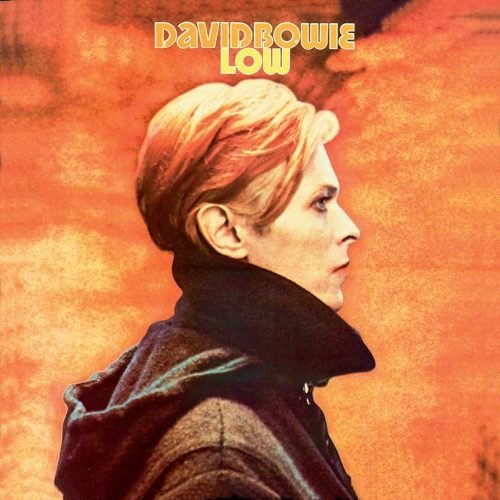David Bowie’s “Low,” the first installment of his enigmatic Berlin Trilogy, marks a pivotal turn in the labyrinthine odyssey of his musical career. Released in January 1977, this album not only redefined Bowie’s artistic trajectory but also left an indelible imprint on the broader music landscape. Coming off the flamboyant and eclectic sounds of the “Ziggy Stardust” era and the soul-infused rhythms of “Young Americans” and “Station to Station,” “Low” emerged as a stark departure, introducing listeners to a sound that was at once alien and intimately reflective.
This shift was not merely a change in musical style but a profound transformation in Bowie’s creative vision, influenced by his personal struggles, a desire for artistic reinvention, and his relocation to West Berlin—a city then synonymous with division and artistic experimentation.
Artistic Intentions
The artistic intentions behind “Low” are as layered and complex as the album’s sound. Bowie, grappling with his own demons and seeking a fresh start away from the turbulence of his life in Los Angeles, dove into the realms of electronic and ambient music. Influenced heavily by his collaborations with Brian Eno and the burgeoning electronic scene in Germany, Bowie aimed to craft an album that eschewed conventional rock narratives for something more fragmented, introspective, and experimental. The result was an avant-garde masterpiece that juxtaposed upbeat, albeit unconventional, rock tracks on its first side with ambient, instrumental pieces on the second—each serving as a counterpoint to the other, yet together creating a cohesive sonic exploration.
In interviews and reflections on the album, Bowie often spoke of his desire to capture the sense of isolation and introspection he felt, using the music as both a mirror and a mode of escape from his personal turmoil. The album’s stark, minimalist cover art—a profile shot of Bowie looking down, seemingly introspective or detached—further encapsulates this mood of isolation and the introspective journey Bowie invites his listeners to embark on.
Through “Low,” Bowie did not merely aim to innovate musically but sought to convey a deeper emotional and psychological narrative, making the album a critical turning point that would influence not only his future work but also the evolution of electronic and experimental music in the years to come.
Sonic Exploration

David Bowie’s “Low” is a masterclass in sonic exploration, where the production quality, musical arrangements, and genre elements collectively forge a landscape that is as innovative as it is introspective. The album’s production, led by Bowie and Tony Visconti, is a meticulous blend of clarity and texture, offering a sound that is both crisp and atmospheric. This duality serves the album’s thematic essence, navigating between stark introspection and expansive, ambient landscapes.
The production choices, including the use of then-emerging electronic instruments and studio techniques, not only enhance the album’s emotional depth but also its groundbreaking aesthetic. The clarity in the mix allows each experimental sound to breathe, while the texture adds a layer of complexity and mood that is essential to the album’s introspective nature.
Musical Arrangements
The musical arrangements on “Low” are nothing short of revolutionary. The album is notable for its bold use of synthesizers, sequencers, and unconventional song structures that defy the norms of rock music. Side one of the album features tracks with a more traditional rock and pop sensibility, yet they are infused with electronic elements that give them a unique sound. Bowie’s vocals, often layered and processed, add to the ethereal quality of the music. Side two delves into instrumental compositions that are rich in ambient textures, showcasing Bowie and Brian Eno’s pioneering work in electronic and ambient music. These arrangements are not just innovative for their time; they continue to influence artists across various genres.
Genre Elements
In terms of genre, “Low” is a chameleon that traverses the landscapes of rock, electronic, ambient, and experimental music. This fusion is groundbreaking, marking a departure from Bowie’s glam rock and soul-infused earlier works. The album’s ability to blend these genres into a cohesive whole speaks to Bowie’s and Eno’s vision of pushing musical boundaries. The ambient tracks on side two, for example, predate much of what would later be recognized as ambient music, establishing Bowie as a forward-thinking artist unafraid to explore and redefine genre conventions.
“Low” remains a seminal work in Bowie’s discography and in the broader music landscape for its daring sonic exploration. Its innovative production, rich musical arrangements, and genre-blending qualities not only encapsulate Bowie’s artistic vision at a pivotal moment in his career but also continue to inspire and resonate with listeners and musicians alike, cementing its place as a timeless piece of musical artistry.
Lyrical Analysis

David Bowie’s “Low” presents a fascinating lyrical journey that veers away from the conventional, delving into themes of alienation, introspection, and the search for meaning amidst chaos. The album’s lyrical content is marked by a shift towards abstraction, offering a stark contrast to the more narrative-driven lyrics of Bowie’s earlier works. This shift aligns with the album’s experimental musical direction, emphasizing mood and atmosphere over explicit storytelling.
Themes and Messages
Central to “Low” is the theme of alienation, both in a physical and psychological sense. This is reflective of Bowie’s own experiences of dislocation and his attempt to grapple with personal demons during his time in Berlin. The lyrics often explore feelings of disconnection from oneself and the surrounding world, a motif that resonates deeply within the context of Bowie’s life and the broader existential questions of the 1970s. The fragmented nature of the lyrical content, where words sometimes serve more as emotional cues than as conveyors of direct messages, enhances the theme of disorientation and search for grounding.
Lyrical Depth
The lyrics on “Low” are characterized by their complexity and poetic nature. Rather than telling specific stories, they evoke images and feelings that are open to interpretation. This abstract lyricism invites listeners to project their own meanings and experiences onto the songs, creating a deeply personal connection to the music. The album’s use of non-traditional song structures and the inclusion of instrumental tracks further emphasize its departure from narrative lyricism, leaning instead towards creating a tapestry of mood and texture that complements the sonic experimentation.
Emotional Impact
The emotional impact of “Low” is profound, with the lyrics playing a crucial role in evoking a spectrum of responses from the listener. The abstract and often introspective nature of the lyrics can evoke feelings of sadness, contemplation, and sometimes, an unsettling sense of unease. However, within these emotional landscapes, there is also a sense of beauty and transcendence. The album’s exploration of human fragility and resilience strikes a chord, making the listening experience both challenging and deeply rewarding.
In tracks like “Sound and Vision,” the sparse lyrics juxtaposed with upbeat melodies capture a sense of longing and the desire for escape from one’s own thoughts, reflecting the album’s overarching themes of isolation and the search for clarity. The instrumental tracks, devoid of lyrics, contribute to the album’s emotional resonance in a more implicit manner, inviting listeners to fill the void with their own interpretations and emotional responses.
Cohesion and Flow

In assessing the cohesion and flow of David Bowie’s “Low,” the album emerges as a meticulously crafted piece that balances between fragmentation and unity, creating a seamless auditory journey that reflects its thematic and emotional depth. The track progression and thematic consistency work in tandem to produce an experience that is as intellectually stimulating as it is emotionally resonant.
Track Progression
“Low” is divided into two distinct halves, yet there’s an underlying narrative and emotional progression that ties the album together. The first side, characterized by its more conventional songs interspersed with experimental sounds, takes the listener through a range of emotions from the upbeat “Sound and Vision” to the introspective “Be My Wife.” The progression from track to track is smooth, with each song adding a layer to the album’s exploration of dislocation and self-discovery.
The second side ventures into purely instrumental tracks that further the album’s exploration of mood and atmosphere. This side represents a departure from the vocal-driven first half, yet it feels like a natural continuation of the journey, delving deeper into the themes of isolation and introspection. The flow from the energetic, albeit complex, compositions of the first side to the ambient landscapes of the second creates a narrative arc that is emotionally compelling and intellectually engaging.
Thematic Consistency
Despite the apparent dichotomy between the two halves of the album, there is a remarkable thematic consistency that binds them. The themes of alienation, introspection, and the search for meaning are omnipresent, whether through the cryptic lyrics of the first half or the evocative instrumentals of the second. The stylistic shifts, rather than feeling jarring, enhance the album’s thematic exploration, showcasing Bowie’s ability to traverse different musical landscapes while maintaining a cohesive vision.
The emotional palette of the album is also consistent, with the varying moods of the tracks contributing to a holistic exploration of the human condition. The juxtaposition of hope and despair, clarity and confusion, mirrors the complexities of Bowie’s personal experiences and broader existential queries. This thematic and emotional consistency ensures that “Low” feels like a cohesive work, despite its innovative and genre-defying nature.
Standout Tracks and Moments
David Bowie’s “Low” is replete with standout tracks and moments that not only showcase his artistic innovation but also the emotional depth and complexity of the album. These elements contribute to the album’s enduring legacy and influence.
Standout Tracks
“Sound and Vision” is perhaps one of the most recognizable tracks from “Low,” and for good reason. Its upbeat tempo belies a deeper exploration of isolation and the desire for inspiration. The song’s arrangement, featuring a prominent saxophone and a minimalist approach to lyrics, emphasizes the introspective theme of seeking solace and clarity amidst confusion. What sets “Sound and Vision” apart is its ability to encapsulate the album’s mood of introspection and the search for escape, all within a framework that remains accessible and sonically engaging.
“Warszawa” stands as a testament to the album’s innovative use of instrumental tracks to convey emotion and narrative. This track, with its haunting melody and ambient, choral synths, transports the listener to a desolate yet beautiful landscape, reflecting Bowie’s impressions of Warsaw. Its significance lies in its ability to evoke a profound sense of melancholy and introspection, showcasing Bowie and Eno’s ability to create a vivid, emotional soundscape without the need for words.
Memorable Moments
The opening of “Warszawa” serves as one of the album’s most memorable moments. The slow build-up, with its eerie synthesizers and minimalist arrangement, sets a tone of otherworldly contemplation that defines the second half of the album. This moment captures the essence of “Low” in its ability to convey deep emotional narratives through experimental soundscapes.
In “Be My Wife,” the straightforward plea encapsulated in the lyrics offers a poignant counterpoint to the album’s overarching themes of alienation and disconnection. The simplicity and directness of the line “Please be mine, share my life, stay with me, be my wife” juxtaposed with the song’s upbeat piano riff create a powerful emotional moment that underscores the human longing for connection and normalcy amidst turmoil.
These tracks and moments exemplify the artistic merit, innovation, and emotional impact that “Low” has had on the landscape of modern music. Bowie’s ability to blend experimental soundscapes with profound lyrical themes ensures that “Low” remains a cornerstone of his discography, capturing the imagination of listeners and influencing artists across genres. The album’s standout tracks and moments are not just highlights of Bowie’s career but milestones in the evolution of contemporary music, showcasing the power of sonic experimentation to evoke deep emotional responses.
Artistic Contribution and Innovation

David Bowie’s “Low” occupies a unique and pivotal place within its genre and the music industry at large, heralded not just for its boundary-pushing nature but also for its profound impact on the trajectory of modern music. Released in 1977, at a time when rock and pop music were undergoing significant transformations, “Low” stands as a beacon of innovation, challenging the established norms of music production, genre, and thematic exploration.
Innovation in Production and Genre
The album is particularly innovative in its production techniques. Bowie, along with producer Tony Visconti and collaborator Brian Eno, utilized emerging technologies and studio techniques to craft a sound that was ahead of its time. The use of the Eventide H910 Harmonizer on the drums, for instance, gave the album a distinctive sonic texture that differentiated it from anything else at the time. This, combined with the minimalist approach to composition and the layered, synthesizer-driven soundscapes, set “Low” apart from the conventional rock albums of the era.
In terms of genre, “Low” defies easy categorization. While it is rooted in rock, it incorporates elements of electronic, ambient, and experimental music, blending these genres in a way that was groundbreaking. The album’s second side, with its instrumental tracks, was particularly influential in the development of ambient music, demonstrating the potential of electronic instruments and studio effects to create atmospheric and emotionally resonant music. This innovative approach to genre not only set “Low” apart but also paved the way for future musical explorations across various genres.
Thematic Exploration
Thematically, “Low” reflects Bowie’s personal struggles and his reflections on identity, alienation, and the search for meaning. The abstract and introspective nature of the lyrics, combined with the album’s sonic landscapes, creates a deeply immersive listening experience that was innovative for its time. The album’s exploration of complex emotional and psychological themes, through both its lyrics and its music, contributed to a shift in how albums could convey narrative and emotion, influencing countless artists and albums that followed.
Artistic Contribution to the Music Industry
“Low” is widely regarded as a milestone in Bowie’s career and in the evolution of popular music. Its innovative approach to production, genre blending, and thematic depth challenged and expanded the boundaries of what was musically possible. The album’s influence can be seen in the work of a diverse range of artists across genres, from electronic and ambient musicians to rock and pop acts. Its legacy is evident in the way modern artists continue to experiment with sound, structure, and theme, seeking to push the boundaries of their respective genres.
Conclusion
In conclusion, David Bowie’s “Low” is an album that stands out for its bold experimentation, thematic depth, and sonic innovation. Its strengths lie in its ability to seamlessly blend genres, pushing the boundaries of music production and thematic exploration in the process. The album’s first half offers a compelling mix of accessible tracks infused with experimental elements, while the second half delves into instrumental compositions that showcase Bowie’s and Brian Eno’s pioneering work in ambient music. This duality not only highlights Bowie’s versatility as an artist but also his willingness to explore uncharted musical territories.
The abstract lyricism and the innovative use of synthesizers and studio techniques contribute to the album’s unique sound and emotional resonance. These elements, combined with the thematic exploration of alienation and introspection, create a listening experience that is both intellectually engaging and emotionally profound. While some may argue that the album’s departure from conventional song structures and its foray into instrumental tracks could be perceived as weaknesses, these aspects are, in fact, integral to the album’s identity and its impact on the evolution of music.
“Low” holds a special place in Bowie’s career, marking a significant shift in his artistic direction. It not only reflects his personal struggles and his search for renewal but also his ability to reinvent himself and his music. The album’s influence extends beyond Bowie’s discography, impacting a wide range of artists across genres and generations. Its legacy is a testament to the power of musical innovation and the enduring appeal of Bowie’s artistry.
Official Rating
Given its artistic merit, innovation, and impact, it is fitting to rate “Low” a perfect 10 out of 10. This rating reflects the album’s groundbreaking nature, its role in shaping the direction of contemporary music, and its continued relevance to both artists and listeners alike. “Low” is not just a masterpiece in Bowie’s oeuvre but a landmark in the history of music, offering a blueprint for experimental and genre-defying works that followed. Its perfect score is a tribute to Bowie’s genius, his fearless exploration of new musical landscapes, and his profound influence on the music industry and culture at large.
